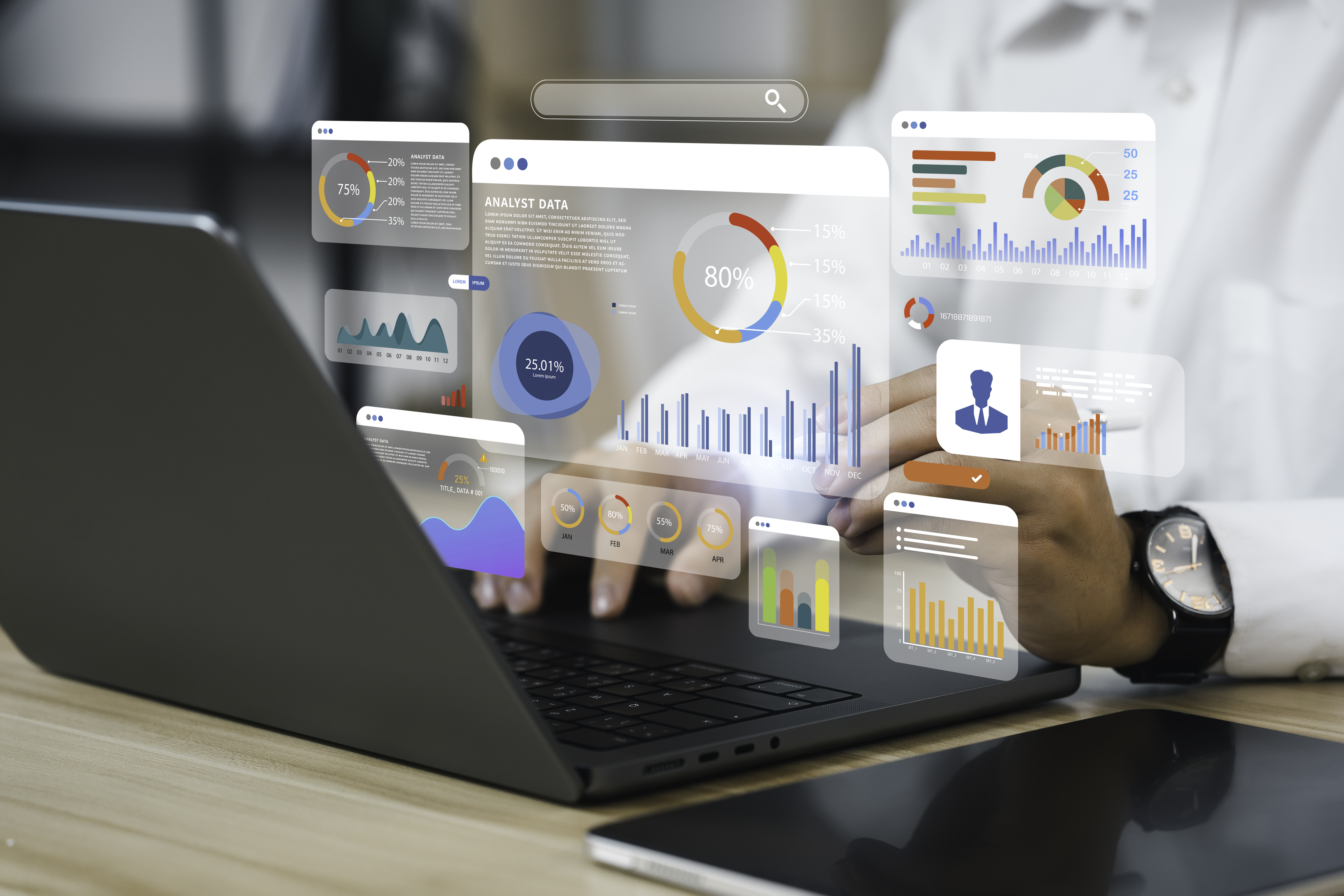October 1, 2025
 by Evelina Milenova / October 1, 2025
by Evelina Milenova / October 1, 2025

You already know customer engagement is more than a buzzword. It’s the difference between one-time users and long-term advocates. But theory only gets you so far.The real challenge? Figuring out which tactics actually work, and how top brands keep customers coming back across channels and touchpoints.
That’s why we’ve curated 7 standout customer engagement examples across SaaS, e-commerce, and digital products to show you exactly how high-performing brands turn casual users into loyal champions.
From welcome emails to gamified product experiences, these strategies are often supported by customer experience tools that help teams track satisfaction, optimize journeys, and personalize every interaction at scale.
From smart onboarding flows to gamified experiences and personalized content, each example breaks down what’s working, why it matters, and how you can apply it to your own engagement strategy.
Note: Customer experience, customer satisfaction, and customer engagement are interconnected yet distinct concepts.
Whether you're fine-tuning your post-signup flows, building a loyalty loop, or experimenting with push notifications, these examples will help you level up from basic engagement to sustainable, scalable interaction.
Let’s look into seven examples of customer engagement and the top tactics companies use to keep their customers’ attention.
A welcome email is the first email you send to potential or current customers. It sets expectations for them — what value they can get from your brand.
Welcome emails also create an opportunity to introduce customers to your tool, show them how to use it, guide them to your most important resources, or provide exclusive discounts.
When a customer first signs up for your tool or subscribes to your newsletter, your brand is still fresh in their mind, and they’re eager to learn more. It is no surprise that welcome emails have the highest open rates at 64%, which is three times more popular than other emails.
The goal of a welcome email is to guide customers to the next interaction, such as trying out your tool, signing up for a webinar, or reading a blog article.
Here's a great example of a welcome email from the email marketing platform GetResponse.
Source: GetResponse
It begins by highlighting the tool’s key benefits.
Then, it encourages software adoption (making users comfortable with new software) by guiding users to create their first email. It also highlights the tool’s AI feature, which streamlines the process and makes it quick and simple.
The email also does a great job of creating a sense of urgency.
There are two types of notifications, in-app and push notifications. Both help engage customers and prevent them from churning (when a SaaS customer cancels their subscription).
Notifications can also encourage conversions.
In-app notifications appear while users are in an app to inform and engage them for a longer period. These notifications can come in the form of small pop-ups or full-screen messages.
Source: Etsy
Popular use cases for in-app notifications include:
Push notifications appear when an app is closed and help bring users back to it. Push notifications can come from an app or a web browser.
Source: Apple support
You can A/B test push notifications to see what drives higher engagement. Does a specific time of the day work better? Or does one call to action engage users more than another?
Here are some common uses of push notifications:
Interestingly, driving customer engagement with push notifications is not limited to digital experiences. The MQTT protocol, used in many Internet of Things (IoT) applications, allows notifications to connect our digital and physical lives.
You will find these notifications in smart gadgets for home security, energy-efficient heating, and health tracking, among other applications. They can trigger actions such as adjusting the thermostat or monitoring glucose levels.
Apple Watch is a smartwatch with diverse capabilities, including health tracking. It can monitor metrics related to your physical activity, sleep, heart rate, medications, moods, and menstrual cycles.
The watch uses different types of notifications to keep users engaged.
Source: Apple support
For instance, the Health app alerts you if your heart rate is above or below a certain threshold or if you’ve experienced an irregular heartbeat.
Similarly, the Fitness app sends notifications regarding your physical activity. It also uses positive reinforcement to stimulate users. You’ve hit a daily fitness goal; you get a notification to congratulate you on your efforts. You’ve missed a goal; a notification encourages you to try harder next time.
Gamification in SaaS involves incorporating game elements to engage users and maintain their motivation. Such elements could be badges, progress bars, pop-up messages, automated checklists, and streaks, among others.
In game design, one way to make a game more engaging is to include positive rewards.
For example, the racing simulator Gran Turismo encourages users to complete daily workouts by offering roulette tickets for exclusive car parts. The unique reward keeps players motivated to drive every day.
Source: Gran Turismo manual
SaaS companies can create similar experiences to keep users engaged and excited about their tools.
Typing assistant Grammarly uses different gamification elements to engage users.
They get editing suggestions when editing a text using the Grammarly app or plugin. Once they’ve reviewed all the edits, Grammarly shows encouraging messages such as “Nice job! You made that look easy.”
Moreover, Grammarly sends weekly emails to celebrate users’ writing streaks. These emails also include charts and percentages comparing users’ productivity, accuracy, and vocabulary to other users.
Such emails can be an excellent incentive for competitive users.
Source: Grammarly
Quizzes are a form of interactive content with elements of personalization and gamification.
There are different types of quizzes, including trivia, personality, and product recommendation quizzes. Each type gives you a different opportunity to connect with your target audience and grab their attention.
Here are a few ideas.
Product recommendation quizzes ask users several questions to determine the best product for their needs. These quizzes are most popular in e-commerce, but can also be easily applied to SaaS.
Research quizzes collect user information and are a fun alternative to traditional feedback surveys. Depending on users ' replies, you can personalize the experience by creating different question paths.
Assessment quizzes test a user’s knowledge of a topic. You can integrate them into your onboarding process to enhance the experience with gamification. Or, you can make them part of a competition and incentivize user participation with rewards.
All types of quizzes are excellent for data collection, so you can also use them to segment your audience more precisely for other marketing activities.
Zapier helps businesses automate workflows by integrating different apps without coding. One of its biggest advantages is that it can connect to almost 7,000 tools. The downside is that deciding what to automate can be overwhelming.
Zapier has solved this challenge by creating a quiz to understand users’ pain points.
Source: Zapier
They ask:
Based on this information, Zapier recommends relevant integrations. That helps new users quickly set up automated workflows.
Personalizing content involves gathering user data and using it to create tailor-made experiences for every user. It makes users feel valued and encourages continuous engagement.
YouTube, Spotify, and Netflix are among the leaders in content personalization. The more content you consume, the better the algorithm serves your interests. Thus, the in-app experience you receive is unique and engulfing.
To start with personalization, you need to segment your users. Use consumer data to put users into different categories depending on their app usage or stage in the customer journey. Alternatively, you can segment users by age, gender, location, occupation, and other factors.
Project management tool ClickUp starts segmenting users during the signup process. Before onboarding, they go through a quick set of questions that help personalize their experience.
ClickUp asks users how they will use the software, whether in a team setting or individually, and what department they work in. Based on their replies, users get a curated selection of templates for their projects.
Source: ClickUp
If they’ve been using a different project management software, they’re guided through a seamless process to import their tasks.
Questions like these help ClickUp segment customers while simplifying onboarding and creating a more engaging, customized experience.
Social media lets you connect directly with users and build a community around your brand and values.
You can engage your social media audience in various ways.
The most straightforward approach is to post content that resonates with your followers. Likes, comments, shares, views, clicks, saves, and other interactions are ways users can engage with your brand.
You can also use social media to collect customer feedback and provide customer service. It requires responding to comments and DMs. You may also need a social listening tool to track brand mentions across all channels.
Explore the best online community management software to build stronger connections and turn engagement into long-term loyalty.
Canva, a popular online graphic design tool, actively uses social media to engage with current and potential customers.
Here’s an example of how it used customer feedback:
In the Instagram comments, multiple users requested a specific template. Canva listened to them and added the template to its library. Next, the brand created a post around that, which sent an important message: “We value customer feedback, and we take it to heart.”
Source: Canva on Instagram
Canva also excels at ut ilizing user-generated content (UGC).
UGC allows the brand to showcase unique use cases for its tool while demonstrating social proof. The example below demonstrates how to integrate Canva with another tool to create visually appealing charts and effectively visualize data.
Source: Canva on Instagram
Loyalty programs provide incentives for businesses’ best customers to keep them engaged and build loyalty. Incentives can be vouchers, discounts, and free perks, among others.
There are different ways to set up a loyalty program. One approach is to reward users whenever they introduce you to new customers. Alternatively, to stimulate spending, you can give points at every purchase and allow users to redeem their points for enticing rewards.
What makes an effective loyalty program?
Meaningful and desirable rewards. To keep your customers engaged, they need to recognize the value of participating in your offerings.
The AI copywriting tool Frase provides a great example of how a company can foster loyalty beyond monetary rewards. They launched a Facebook group to facilitate direct interaction with customers and enable them to communicate with one another.
To keep group members engaged, Frase gives them insight into upcoming features and involves them in the early stages of new releases.
Source: Frase Insider
The team at Frase proactively seeks customer feedback and maintains an ongoing dialogue, showing users that their needs and opinions matter.
Frase has also successfully built a community around their product. Anyone can post questions and receive replies from fellow users.
Measuring customer engagement shows you how involved customers are with your brand. This helps you test different tactics, understand which are most effective, and invest resources more effectively.
In fact, according to G2 Data, aggressive adopters of AI-powered automation are expected to reduce marketing operational costs by 30%. This is a reminder that tracking and automating engagement isn’t just about insights, it’s about impact.
Here’s how you can quantify customer engagement.
You can use different metrics to measure customer engagement depending on your customer engagement strategy.
Transactional NPS is measured in customer interactions such as sales meetings or software implementation workshops. It helps us identify areas for improvement and develop our service and processes to better meet customer needs.
We evaluate each touchpoint to Decide how it works and make adjustments to enhance the overall customer experience.
"At Trustmary, we measure both transactional and relationship NPS. When measuring NPS, we also ask for feedback and reviews. Relationship NPS allows us to measure customer satisfaction across our entire customer base once a quarter. We measure it every quarter to get a clear picture of how satisfied our customers are. So, we can quickly react to any potential bottlenecks.”
– Petteri Puumala, Customer Success Manager, Trustmary
If you’re using social media to engage with customers, you can track how many users shared and saved your content. For email marketing, a relevant metric can be open rates.
Tip: A good engagement score will look different depending on the metrics you use to measure customer engagement. For instance, if you track conversion rates, you want them to be over the industry average. If you measure the NPS, a score above 50 is considered excellent, and over 80 is considered outstanding.
The same applies to different teams within your company. Some customer engagement metrics will be more relevant to your marketing specialists, while others will be more relevant to your product developers.
Customer engagement isn’t one-size-fits-all. The most effective brands don’t just apply tactics randomly. they match them to specific customer journey stages to guide users from awareness to advocacy.
This strategic alignment ensures that every interaction. Whether it’s a welcome email or a loyalty reward, it happens at the right moment, for the right reason.
Here’s how to connect engagement tactics to the three core stages of the user lifecycle:
| Journey stage | Example tactics | Tools that help | Metrics to tracxk |
| Onboarding | Welcome emails, interactive product tours, quizzes, and guided setup flows | Onboarding software, customer experience (CX) tools | Activation rate, time to value, product adoption, time to first action |
| Retention | Push notifications, gamification elements (streaks, badges), personalized content, usage nudges | Push notification software, behavioral analytics tools | Session frequency, engagement depth, churn rate, feature adoption |
| Advocacy | Loyalty programs, user-generated content (UGC), community participation, referral incentives | Loyalty software, community platforms, and feedback tools | Net Promoter Score (NPS), referral rate, repeat purchases, reviews/ratings |
There’s no one-size-fits-all answer. It depends on your audience and product. However, personalized onboarding and behavior-based push notifications consistently drive high engagement across SaaS and digital products because they meet users at the right moment.
Track metrics aligned to your goals, for example:
You can also run A/B tests to optimize tactics over time.
It depends on the channel and context. Over-engagement can lead to fatigue or unsubscribes, while under-engagement leads to churn. Utilize customer experience tools to track sentiment and adjust frequency according to behavior and preferences.
Yes. Automation tools can trigger relevant messages at the right time, but personalization and thoughtful content keep it human. The key is using customer data intelligently to create experiences that feel tailored, not templated.
Customer satisfaction measures how pleased someone is after a specific interaction. Customer engagement is about ongoing, proactive interaction across the lifecycle, before, during, and after the sale.
Good customer engagement means customers actively engage with your brand at different touchpoints, they open your emails, participate in your loyalty program, like your social media posts, or contribute to your online community.
With all the touchpoints and tactics necessary to engage customers, managing and tracking everything can become a challenge. But with a manual approach, you risk wasting time and resources, which can lead to inaccuracies. According to G2 Data, aggressive adopters of AI-powered automation are expected to reduce marketing operational costs by 30%.
Your best bet is using marketing automation software to create, manage, and optimize omnichannel customer interactions. It collects all customer data in one place, making it easier for brands to personalize messages and make holistic business decisions.
Select your marketing automation platform and discover the full range of benefits for customer engagement.
Explore our complete guide to choosing the right push notification software for your customer engagement strategy.
Edited by Jigmee Bhutia
This article was originally published in 2024. It has been updated with new information.
Evelina Milenova is the Outreach Manager at Opinion Stage. Her expertise lies in SEO and content marketing – two topics she often writes about on her LinkedIn page.
Both dating and shopping make us want to feel special.
 by Inga Leder
by Inga Leder
Engagement is everything.
 by M.Salim Dın
by M.Salim Dın
Imagine walking into your favorite neighborhood coffee shop. You take in the aroma of your...
 by Jasmine Handa
by Jasmine Handa
Both dating and shopping make us want to feel special.
 by Inga Leder
by Inga Leder
Engagement is everything.
 by M.Salim Dın
by M.Salim Dın


